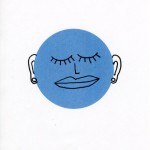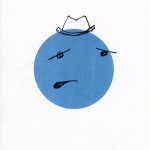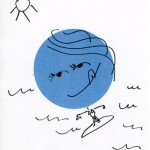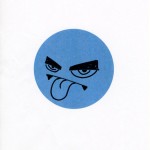Practicing frameworks
Last week, we began our Thesis Preparation seminar with Liz Danzico. After a great lecture on the merits of improvisation and keen observation skills, among other things, we were given our first assignment: to prepare a framework, or “pseudo-structure” (as Frank Chimero calls it), for a creative endeavor. (The assignment itself, in fact every assignment, is a framework, though usually they are not as open-ended as this one.)
My framework is based on an in-class assignment. We were each given, at random, a sheet of paper with a colored circle on it, and then asked to create a pseudo-structure based on that color. I got a blue circle. My first response was to draw a face on it. I drew the opposite of how it made me feel. Blue generally makes me feel serene, even and quiet. So I drew a series of faces bursting out laughing. Then I got curious: what does blue make others feel? So I ran some copies, gave them to people, and said:
“Draw a face on this circle that represents how this color makes you feel.”
There were some limitations: The face had to be drawn with a black Sharpie, and it had to stay within the boundaries of the page.
And here are the results:
What did I learn from this frameworks practice? That they help people get started! Given any creative exercise, it takes the pressure away from starting from a blank canvas. Everybody to whom I gave a blue circle had no problem putting marker to paper right away. It helped that the creative act was a simple one and could be completed in under a minute. Perhaps that was another constraint, albeit not one I articulated. So it seems, then, that not all constraints have to be explicit. Perhaps a good framework is one that would give flexible, implied constraints as well as the more rigid ones. After all, it’s a pretext and a scaffold, not a scientific experiment with controlled variables.
Now I remember why it was so fun making art projects in college that involved defining a set of rules. Sol Lewitt was onto something there!







